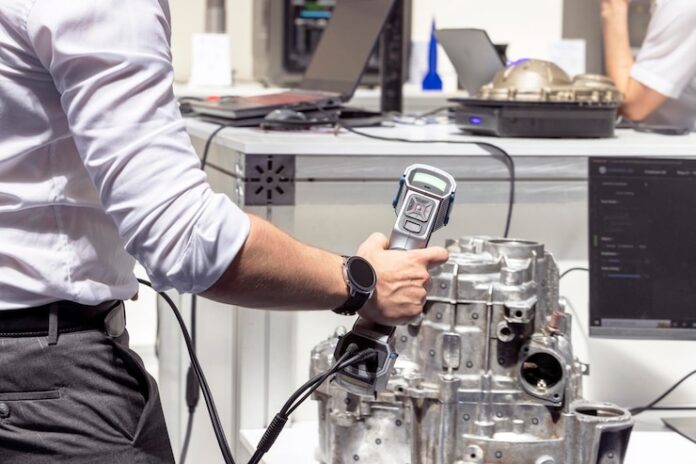In industrial settings where precision and safety are paramount, load cells are crucial components. They measure force and weight in a wide variety of applications—from manufacturing and logistics to aerospace and construction. While highly reliable, load cells are not infallible. Without regular calibration, they can gradually become inaccurate, leading to potentially serious consequences. This is where Load Cell Calibration Services play an essential role.
Ignoring routine calibration might seem like a cost-saving shortcut. But the truth is, the long-term risks and hidden costs of load cell failure can be substantial—ranging from compromised product quality to equipment damage and even serious injury. Let’s explore the specific dangers and why consistent, professional calibration is not just recommended—it’s vital.
Understanding Load Cell Calibration
Calibration is the process of comparing the load cell’s output against a known standard and adjusting the output to match the true value. Load cells can drift over time due to mechanical fatigue, temperature changes, electrical interference, or simple wear and tear.
Load Cell Calibration Services ensure that your measurement systems remain accurate, reliable, and compliant with relevant industry standards. Calibration identifies any discrepancies, corrects errors, and provides a clear benchmark for performance.
The Hidden Dangers of Ignoring Calibration
Inaccurate Measurements
This is the most immediate and obvious risk. Even a small measurement error can compound over time and affect critical decisions. Whether you’re mixing chemicals, batching food ingredients, or monitoring structural loads, inaccurate readings lead to product defects, batch rejections, or unsafe conditions.
Compromised Safety
Load cells are often used in lifting systems, cranes, and structural testing. If a load cell provides incorrect readings, the result can be catastrophic. Overloading without realizing it may cause structural failure, dropping of heavy materials, or collapse—endangering lives and property.
Equipment Damage
Misreadings can also damage expensive machinery. If a load cell incorrectly indicates that a weight is within a safe range when it’s actually excessive, this can overstrain motors, bearings, and structural elements. Regular use in such a state accelerates wear and increases the likelihood of breakdowns.
Regulatory Non-Compliance
Industries governed by stringent standards—like pharmaceuticals, aviation, and food production—require certified equipment calibration. Failure to comply may lead to fines, lawsuits, or loss of certification. Proper Load Cell Calibration Services help you stay within these legal bounds.
Lost Productivity and Revenue
Poorly calibrated load cells can slow down operations. Manual checks, repeat production cycles, or rejected shipments cost time and money. In worst-case scenarios, a full production halt might be necessary until accurate readings are restored.
You could check here for more insights into how small errors can snowball into serious operational disruptions.
Why Load Cells Drift Over Time
Understanding why load cells drift helps highlight the importance of routine calibration. Common causes include:
- Mechanical Fatigue: Repeated use causes microscopic structural changes.
- Temperature Variations: Expansion and contraction can affect strain gauge readings.
- Electrical Interference: Noise from nearby equipment can alter output signals.
- Moisture and Dust Ingress: Especially in outdoor or harsh environments.
- Improper Handling or Overloading: Accidental impacts or misuse can warp sensors.
You can find out more about common load cell vulnerabilities through our expert resource section.
How Often Should You Calibrate?
There’s no universal answer, but some general rules apply:
- High-Use Equipment: Every 6 months
- Critical Applications: Quarterly or even monthly
- Low-Use or Non-Critical Applications: Annually may suffice
Factors like environmental conditions, the criticality of accuracy, and industry regulations also influence frequency. Professional Load Cell Calibration Services can tailor a calibration schedule specific to your operation.
What Happens During Calibration?
Here’s what to expect during a typical load cell calibration:
- Visual Inspection: Check for damage or corrosion.
- Functional Testing: Confirm that the cell is operational.
- Apply Known Loads: Use certified weights or test machines.
- Record and Compare: Output readings vs. true values.
- Adjustment: Fine-tune the electronics or mechanical setup.
- Documentation: Issue calibration certificates and update records.
Accredited calibration services often use traceable standards, meaning your load cells are benchmarked against recognized national or international weights.
To see how this process could benefit your equipment, get more information in our detailed service brochure.
Choosing a Reliable Calibration Partner
Not all calibration services are created equal. Look for providers who:
- Are ISO 17025 certified or similarly accredited
- Offer onsite and in-lab calibration options
- Provide full documentation and traceability
- Use precision equipment traceable to national standards
- Have a responsive support team and fast turnaround
Our Load Cell Calibration Services meet and exceed these benchmarks, ensuring your systems operate at peak performance.
Go right here to schedule your next service and reduce the risk of costly equipment failure.
Conclusion: Calibration Is Not Optional
While it’s easy to overlook calibration in the rush of daily operations, doing so puts your entire system at risk. Inaccurate readings compromise safety, degrade product quality, and invite regulatory trouble. Investing in Load Cell Calibration Services is a small but essential step toward protecting your business, your equipment, and your people.
Whether you manage a high-throughput production line, maintain infrastructure, or oversee specialized lab testing, calibration ensures that you stay on point. Load cell failure isn’t just a technical problem—it’s a business liability.
Check over here to learn more about our expert calibration programs and how we can help you build reliability into every measurement.
Remember: Calibration is not just maintenance. It’s risk management. It’s accuracy assurance. And above all, it’s peace of mind.
Let our trusted Load Cell Calibration Services be your safeguard against measurement failure.



